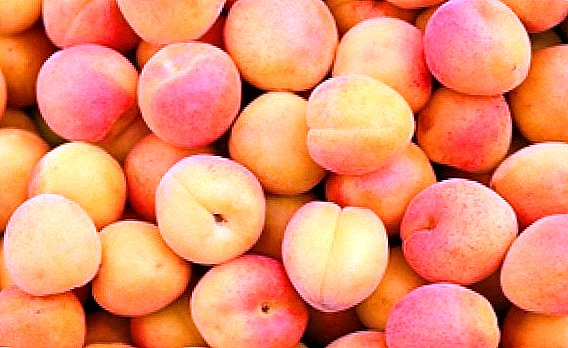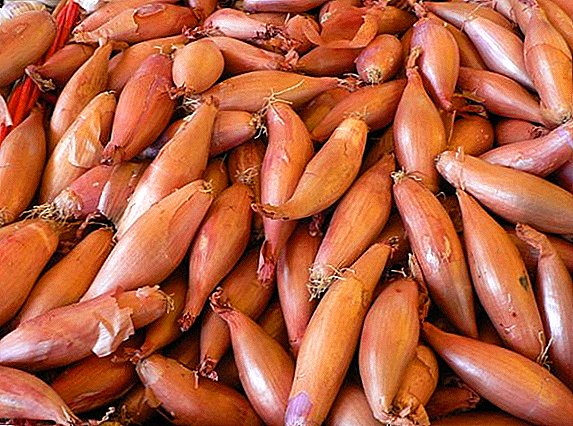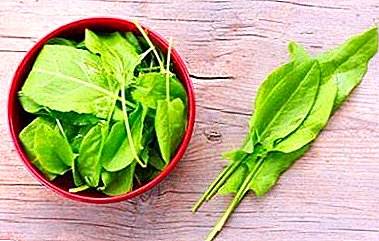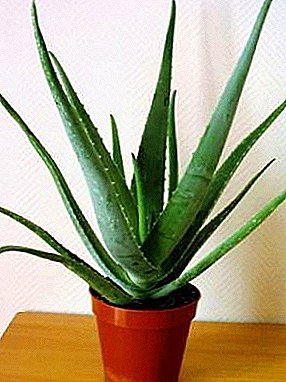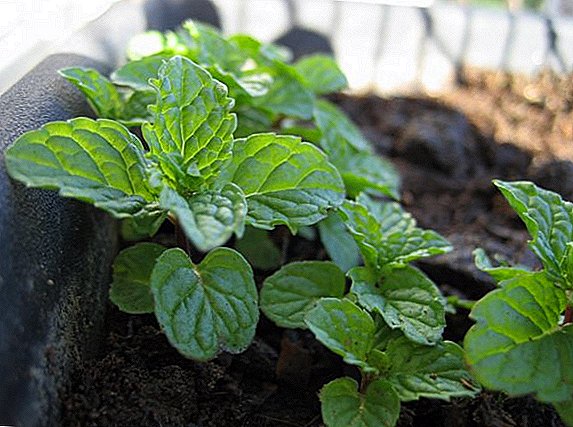 Mint is one of the most famous spices, without which it is impossible to imagine the taste of many dishes and all your favorite drinks (it is enough to recall the famous Mojito - a refreshing cocktail associated with summer, sea and blissful idleness).
Mint is one of the most famous spices, without which it is impossible to imagine the taste of many dishes and all your favorite drinks (it is enough to recall the famous Mojito - a refreshing cocktail associated with summer, sea and blissful idleness).
Did you know? Mint has been used by mankind since time immemorial. The ancient Egyptians laid fragrant twigs of this plant in the tombs of the pharaohs. However, mint owes its name to the ancient Greeks - it is named after the nymph Menta (Menfa, Naiad), the beloved of Hades, the god of death and ruler of the underworld.
 Mint can be easily purchased in a supermarket or on the market, but it is much more interesting to grow it yourself in your own summer cottage or just at the window.
Mint can be easily purchased in a supermarket or on the market, but it is much more interesting to grow it yourself in your own summer cottage or just at the window.In nature, there are a huge number of varieties of mint, in addition, many varieties of artificially bred by breeders. Each of the varieties of mint has its own unique shade of a refreshing menthol smell.
The most common and most fragrant is considered peppermint, bred more than three hundred years ago by the British as a result of the crossing of various plant varieties. This variety (Latin name - Mentha piperita), as a rule, is used in cooking, perfumery, pharmacology and the chemical industry, as it contains much more peppermint essential oil than other types.
Peppermint is presented in two forms - black and white. The first one has a coarser smell and blooms later than white, but it contains more essential oil, therefore it is considered more popular.
Among the lesser-known mint species that also occur in our latitudes are the following: Mentha viridis (green), Mentha rotundifolia (apple), Mentha aquatica (waterborne), Mentha arvensis (field), Mentha longifolia (longleaf), Mentha crispa (curly), Mentha spicata (spikelet), as well as Mentha pulegium (mint-biscuit) ).
There are also such "tasty" varieties of mint as banana, pineapple, ginger, strawberry, chocolate, lemon (also known as lemon balm), lemon-bergamot, basil, etc.

What is dangerous mint in the garden
Peppermint is an excellent honey plant and has phytoncidal properties, which makes its cultivation particularly attractive. However, if you decide to plant mint in the garden, you should be aware of the serious danger that an inexperienced novice can face.
Important! Mint has the ability to grow very quickly throughout the site, its root system, like a spider's web, tightens the whole space so that this perennial plant can be removed only by radical deep digging.
If before planting mint, do not forget about it, such problems can be avoided. Some gardeners are advised when planting mint in open ground to pre-fence the selected site for it from all sides, digging deeper sheets of slate, metal or other improvised material that prevents the spread of the plant in width.
A more effective option is to use a special container for planting mint (a flower pot, a plastic bucket or a regular basin), which, together with the mint planted, digs into the ground so that its rim rises slightly above the ground, but the roots of the plant are reliably protected from being able to grow. . 
What conditions does mint need for successful growth?
Mint is a perennial, therefore for its cultivation it is immediately necessary to create the necessary conditions. It is important to decide where to plant the mint on the site, which plants will feel comfortable nearby, what requirements the mint makes to the composition of the soil, lighting, watering.
It is best to plant mint in the area previously occupied by legumes and root crops. Plants such as, say, buckwheat or melon are also considered good precursors for peppermint, because they tend to saturate the land with calcium, which is necessary for normal growth of peppermint.
When choosing, next to what to plant mint, it should be borne in mind that any pesticides exclude the possibility of using this plant, therefore there should be no flowers, no vegetables, or other valuable crops in the immediate vicinity of the mint.
Features of the choice of lighting for mint
For mint you need to choose a warm sunny place, protected at the same time from the scorching midday rays. Peppermint is a moisture-loving plant, therefore drying takes it very badly.  The sun should illuminate the mint at least four hours a day, while in the middle of the day it is better for the plant to be in partial shade. The south, south-west or east side is best suited for growing mint in room conditions.
The sun should illuminate the mint at least four hours a day, while in the middle of the day it is better for the plant to be in partial shade. The south, south-west or east side is best suited for growing mint in room conditions.
Long daylight hours accelerates the development of mint, so if the plant is intended for implementation, the time of active lighting of the site can be artificially increased. If the sun in the area is not enough, it will not be a serious obstacle to the growth of mint, provided that the plant is not oversaturated with moisture.
What should be the soil for growing mint
Mint is necessary to provide a light, loose soil with a moist and deep fertile layer. The pH level should correspond to the range of 6.0-7.0. The plant is well suited for sandy soil and loam. Mint does not survive on swampy soils.
In order for the soil not to dry, it is recommended to use mulching.
The plant needs organic, nitrogen and phosphate fertilizers. Feed mint can be 1-2 times a month.
The ground on which the mint grows should be dug up well twice a year and weeds should be weeded constantly, as they can damage the plant's root system. 
The timing of planting mint
Mint belongs to frost-resistant plants, therefore it is possible to plant it both in the fall, and in the spring or in the summer. However, for each method of breeding mint is optimal planting in certain periods.
Planting mint in spring
Planting mint by sowing seeds in open ground should be made in early spring, because during the winter the seeds simply freeze out. On the other hand, if the seeds are planted in summer, the perennial shoots will not have time to take root and grow strong before the onset of the first cold weather.
The vegetative way of planting mint can also be carried out in the spring, but not early, and later, when the material for the growing season is fully ripe.
Planting mint in the fall
Planting mint stem and root cuttings carried out at any time of the year - in spring, summer or autumn, depending on the climate. In the northern regions, mint is recommended to end up planting in August, so that the plant has enough time for rooting.  In addition, during late planting it is worthwhile to take care of the additional preparation of the young mint for winter, in order to avoid freezing of the bushes - mulch the bed with a thick (up to 20 cm) layer of peat or sawdust.
In addition, during late planting it is worthwhile to take care of the additional preparation of the young mint for winter, in order to avoid freezing of the bushes - mulch the bed with a thick (up to 20 cm) layer of peat or sawdust.
This procedure is especially relevant in areas where winters are frosty and not snowy enough.
The latest of all possible methods of reproduction is dividing a bush, it can be done in a matter of days before the first frost.
How to choose a quality planting material
Planting material for planting mint can be obtained in various ways - buy it in a store or nursery, order via the Internet, make it yourself (if you are already growing this plant) or ask a trusted friend. Each of these methods has its advantages and disadvantages; the final decision depends on many factors.
Selection of seeds for planting
Independent collection of seeds from the mother plant is a rather painstaking and complicated process. In addition, artificially created varieties of mint often produce seeds, from which it is not a mother plant that grows, but a completely different variety - from those used by breeders to breed a hybrid.
First of all, this danger belongs to peppermint, which, as is known, is the most popular among gardeners. Of the seeds of curly mint, about two-thirds do not inherit curliness and represent the usual wild variety.  Therefore, it is recommended to buy seeds for planting mint in specialized stores (it is better, of course, that the manufacturer is reliable and tested), such seeds give stronger and more friendly shoots.
Therefore, it is recommended to buy seeds for planting mint in specialized stores (it is better, of course, that the manufacturer is reliable and tested), such seeds give stronger and more friendly shoots.
How to choose mint seedlings
Mint is not very well propagated by seeds, because it is better to provide this business experienced gardeners. It is much easier to purchase ready-made mint seedlings, especially since there are a lot of options for this.
Specialized store - a place where, as a rule, several varieties of seedlings are presented, from which you can choose a plant to your taste. The same applies to farmers' markets, but the purchase of seedlings from untested breeders is dangerous because plants can be infected with pests or diseases, which subsequently can not only destroy the seedlings, but also cause serious harm to other inhabitants of the garden plot.
As a material for future seedlings, you can use a normal process from an adult plant, which is available at your neighbor’s cottage or in a friend’s pot. To do this, cut a sprout with a sharp knife or scissors at a height of 1 cm from the junction with the stem of the parent plant. This sprout is placed in a glass of water, and when the white roots set by it are 5 cm long, the seedlings are ready!
 The same procedure can be done using peppermint, which is sold in grocery stores or on the market. This method does not guarantee a good result, but, in the absence of other options, it can be used as an experiment.
The same procedure can be done using peppermint, which is sold in grocery stores or on the market. This method does not guarantee a good result, but, in the absence of other options, it can be used as an experiment.
Choosing mint seedlings, you should pay attention to its appearance. Plants should not be sluggish, dried up, the height of shoots should not exceed 6-8 cm, otherwise the plant will be difficult to settle down.
Mint Breeding Methods
Mint can multiply by sowing seeds or vegetatively (grafting and dividing the bush).
Seed method
How difficult it is to grow mint from seeds, knows everyone who has ever tried to do it. With all the seeming simplicity of the sowing procedure, mint sprouts very poorly, on the basis of which it is recommended to acquire several bags of seeds at once, since only a dozen plants can grow from one.
Important! There is a generally accepted view that seed reproduction of mint is a complex, lengthy and laborious process. For the cultivation of hybrid varieties, it is not suitable at all.
The mint is sown in early spring into a prepared groove 0.5 cm deep. The seeds of the mint are very small, it is inconvenient to work with them. Slightly pressing the seeds into the ground, they are sprinkled with nutrient composition of the earth (with the addition of compost or humus) and covered with film or glass.
Mint seeds for germination requires a temperature of 20-25 ° C. In this mode, shoots appear in 2-3 weeks. It is important to keep the soil moist, for which it should be sprayed periodically, and also ventilated so that the seeds do not rot and rot. 
When the shoots took shape on two true leaves, the plant can swoop down, planting mint in specially allocated for this pots or containers.
Did you know? Mint grown from seeds has both advantages and disadvantages compared to vegetatively propagated: it grows more slowly, but it retains a delicate structure longer.
Vegetative reproduction
Mint grows quickly and actively during the vegetative reproduction method, which involves three possible options - root or stem cuttings, as well as the division of the bush.
 If the stem is a plant stem, then a sprout of 7-10 cm in length must be cut from the adult individual and placed in water.
If the stem is a plant stem, then a sprout of 7-10 cm in length must be cut from the adult individual and placed in water.
The shoot must be kept warm and well lit enough.
After some time, roots will appear at the end of the stem, after which, as mentioned above, it is simply planted in open ground.
However, there is another way. The stalk can not be put in the water, but Immediately prikopat in wet sand, wait rooting and gently transplant.
For breeding root cuttings they should be separated from the parent plant, prikopat in the prepared cool (+ 5-10 ° C) and a well-lit place, and, sparingly watered, germinate. Root cutting for successful rooting must have at least one bud and 3-4 small leaves.
Important! Reproduction of mint root cuttings ensures the preservation of the original maternal variety.
 For reproduction of mint by dividing the bush adult the plant is dug up, cleared of the earth, divided into several equal parts, each of which is planted separately. For success, it is necessary that each part has both buds and shoots with roots.
For reproduction of mint by dividing the bush adult the plant is dug up, cleared of the earth, divided into several equal parts, each of which is planted separately. For success, it is necessary that each part has both buds and shoots with roots.
The above-ground part of the young bush for better rooting should be cut off, leaving only a few centimeters above the ground. Such a plant takes root for a short time - just a couple of weeks.
General rules for the care of mint in the garden
Mint is not a capricious plant, you just need to ensure that it does not dry out and does not overgrow with weeds. It is also important to loosen, spud and periodically feed the soil, especially in early spring.
Mint grows and bushes better if at the beginning of the season the plant is radically cut.
For protection from freezing, the bed with mint should be covered with spruce branches, manure, straw, dry leaves, or simply sprinkled with earth.
At one place, mint can grow up to ten years, but periodically, every 3-4 years, plants need to be completely renewed, otherwise its root system is destroyed by weeds, and mint becomes weak.
Diseases and pests of mint
The main pests of young mint - mint flea, mint leaf beetle, aphid and mites.
To combat flea, damaging the leaves and roots of the plant, a mint bed in the fall, after harvesting, can be treated with concentrate "Karbofos" (60 g per bucket of water).  Leaf beetle especially often found in the lowlands with an excess of moisture. It is difficult to fight this pest, but you can create conditions in which it will feel uncomfortable - to limit watering and increase ventilation.
Leaf beetle especially often found in the lowlands with an excess of moisture. It is difficult to fight this pest, but you can create conditions in which it will feel uncomfortable - to limit watering and increase ventilation.
Mealy dew - white spider patina striking leaves. The appearance of the disease can be avoided by not planting mint too close to each other, as well as regularly weeding. If the plant is affected, it should be sprayed with colloidal sulfur (one and a half per cent solution with the addition of potash or green soap).
Mint is prone to a disease like rust. The lesion begins at the roots and appears with orange spots on the inside of the leaf. It is necessary to get rid of sick bushes without pity.
To combat powdery mildew and rust, it is necessary not only to collect, but also burn all the affected leaves, since the infection is in them. In the autumn the site should be deeply and thoroughly dig.
Mint diseases and pests should be prevented by preventive methods, since the peculiarity of this plant is that practically any poisons make it completely unsuitable for eating fresh or for drying.
How to harvest mint
Mint harvest can begin to shoot after 2-3 weeks after the first shoots. The plant at this point reaches 20-30 cm, and an extra pruning only enhances its growth and contributes to branching. 
If the purpose of collecting mint is drying, it is better to wait for the moment when the plant is gaining the maximum amount of essential oil. This period coincides with the formation of honey plants and the beginning of flowering.
You can collect mint in different ways: tear off the leaves or cut the stem completely.
For drying, the material is laid out on a flat surface in a single layer and left to dry completely. After that, you can separate the leaves from the stems and rub them, you can leave it whole.
Mint is stored in closed vessels in a dark, dry and cool place, which allows it to preserve the menthol flavor until the spring.
Personally grown mint is not only the best option for harvesting, but also an excellent occasion to spend a summer evening with a cup of spicy aromatic tea, for preparation of which it is enough to add some freshly picked leaves from a home bed to a familiar drink.





